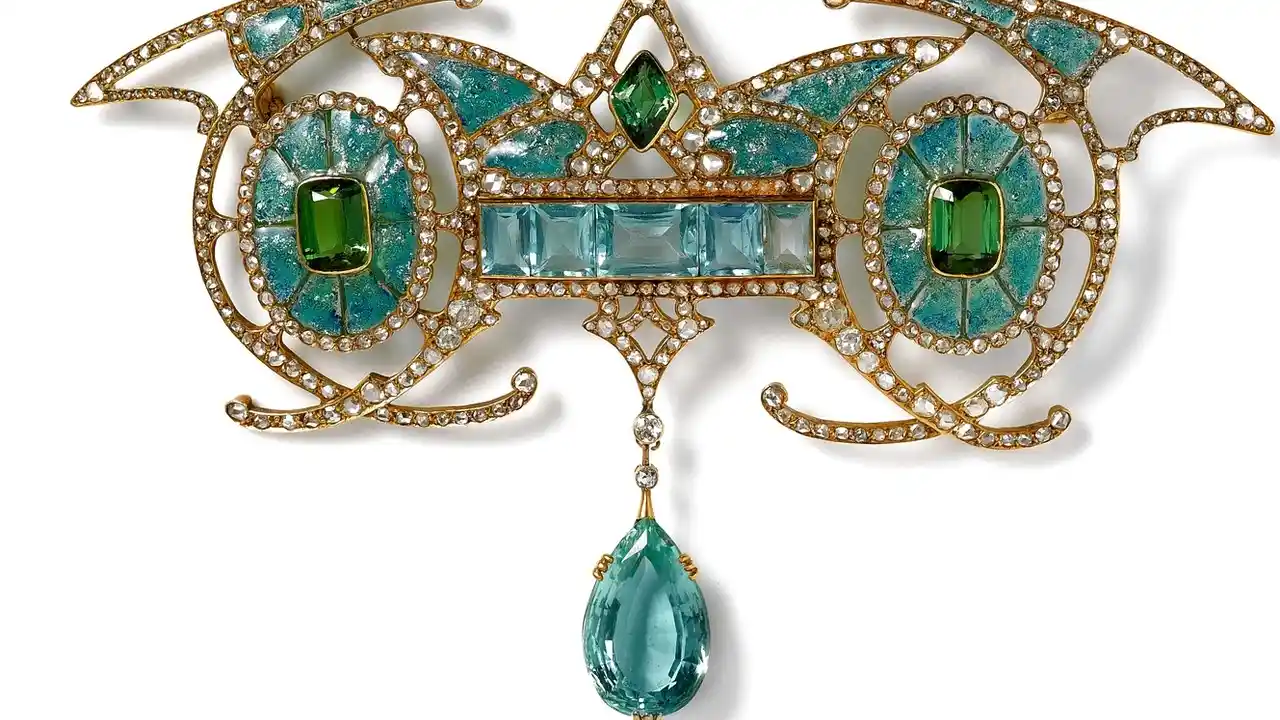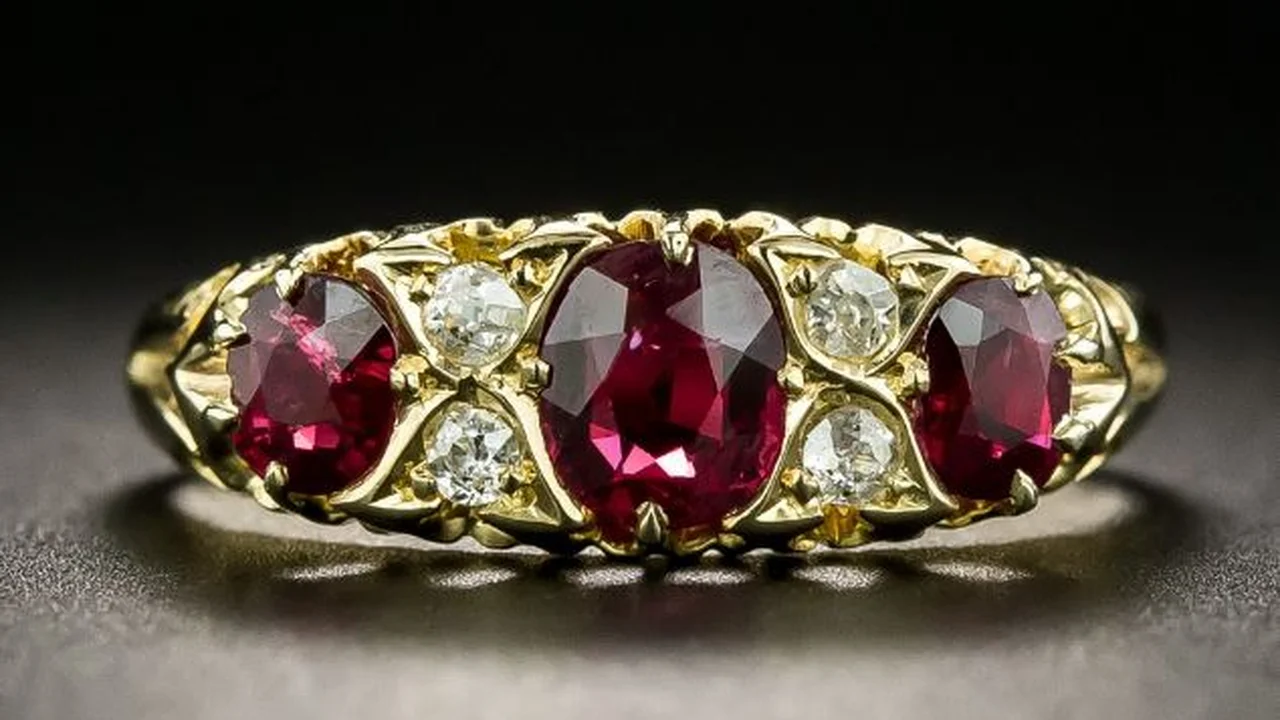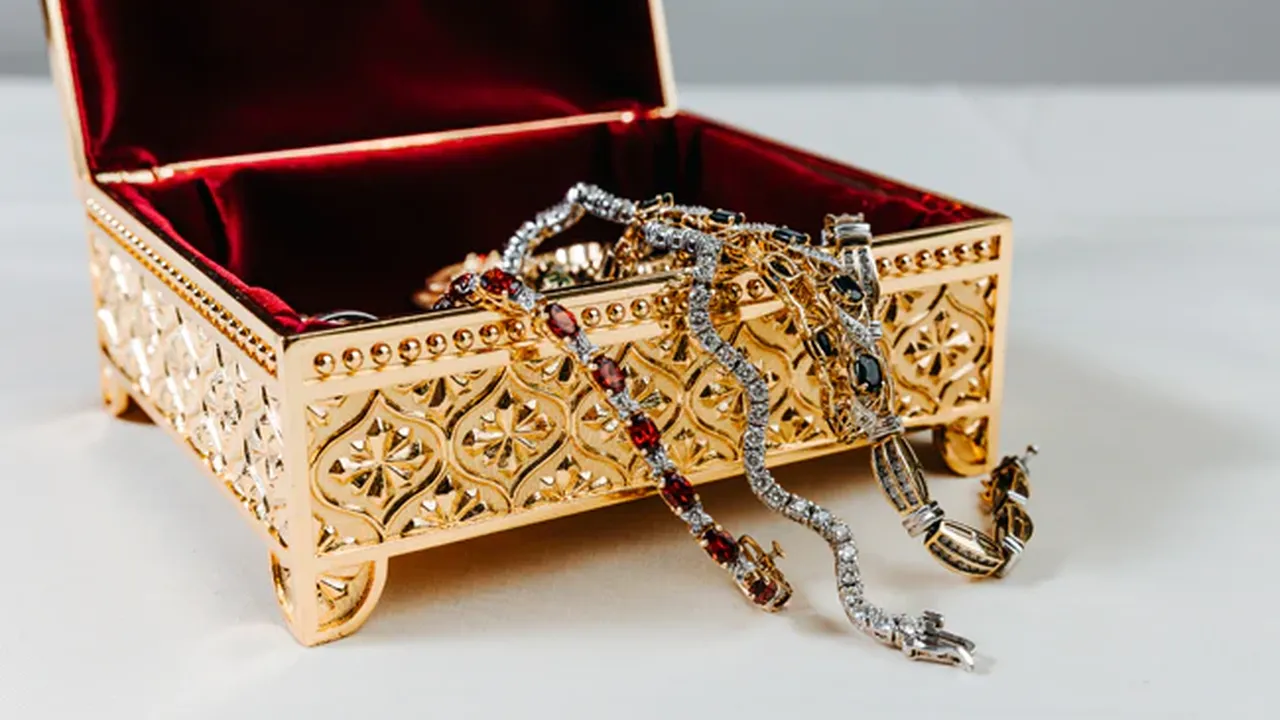Diamonds in Antique Jewelry A Sparkle Through Time
Explore the brilliance of diamonds in antique jewelry Learn about different cuts, clarity, and how to assess the value of antique diamonds.

Understanding Antique Diamond Cuts A Journey Through History
Hey there, jewelry lovers! Let's dive into the dazzling world of diamonds in antique jewelry. These aren't your run-of-the-mill, modern-cut diamonds. We're talking about stones that have witnessed history, each with its own unique character and sparkle. Understanding the cuts, clarity, and how to assess their value is key to appreciating and perhaps even investing in these timeless treasures.
Old European Cut Diamonds A Romantic Glow
The Old European Cut is perhaps the most recognizable antique diamond cut. Popular from the late 19th century to the early 20th century, these diamonds were cut by hand, often using candlelight for illumination! This resulted in a roundish shape with a high crown, a small table (the flat top facet), and a large culet (the bottom facet). The effect? A romantic, slightly diffused glow rather than the sharp brilliance of modern cuts. Think of it as a soft, candlelit sparkle.
Why is it special? Each Old European Cut diamond is unique, reflecting the skill and artistry of the cutter. The hand-cut facets give it a distinct character, unlike the precision of modern machine-cut stones. The larger culet can sometimes be visible to the naked eye, adding to its vintage charm.
Using Scenario: An Old European Cut diamond is perfect for someone who appreciates vintage romance and wants a unique engagement ring or pendant. Its soft glow complements vintage-inspired settings beautifully.
Old Mine Cut Diamonds A Cushion of Sparkle
Before the Old European Cut, there was the Old Mine Cut. Predominantly used in the Georgian and early Victorian eras, these diamonds are characterized by their cushion shape (a square with rounded corners), a high crown, a deep pavilion (the bottom part of the diamond), and a large culet. They were also cut by hand, resulting in variations and imperfections that add to their charm.
Why is it special? Old Mine Cut diamonds have a distinctive 'chunkier' look compared to modern cuts. They tend to sparkle with larger, less dispersed flashes of light. The cushion shape is incredibly flattering and adds a touch of vintage elegance.
Using Scenario: An Old Mine Cut diamond is ideal for someone who loves the history and craftsmanship of the Georgian and Victorian eras. They look stunning in antique settings and can be a conversation starter.
Rose Cut Diamonds A Subtle Sheen
The Rose Cut is one of the oldest diamond cuts, dating back to the 16th century. It features a flat base and a dome-shaped top with triangular facets arranged in a rosebud pattern. Rose Cut diamonds are less brilliant than modern cuts, but they have a subtle, elegant sheen.
Why is it special? Rose Cut diamonds are incredibly romantic and understated. They have a delicate, ethereal quality that's perfect for those who prefer a more subtle sparkle. They're also relatively flat, making them comfortable to wear.
Using Scenario: A Rose Cut diamond is perfect for a delicate pendant, earrings, or a low-profile engagement ring. It’s a great choice for someone who appreciates understated elegance and vintage charm.
Assessing Clarity in Antique Diamonds Imperfections are Character
When it comes to clarity in antique diamonds, don't expect perfection! These stones were cut before modern grading standards, and many contain inclusions (internal flaws) and blemishes (surface flaws). However, these imperfections are often part of their character and history. While large or dark inclusions can affect a diamond's brilliance, smaller inclusions are often considered acceptable and can even add to its uniqueness.
What to look for: Focus on the overall beauty and sparkle of the diamond rather than obsessing over clarity grades. Look for inclusions that are not too distracting or that don't significantly affect the diamond's structural integrity. A slightly included antique diamond can still be stunning and offer excellent value.
Evaluating the Value of Antique Diamonds A Blend of Factors
Determining the value of an antique diamond involves considering several factors, including:
- Cut: The rarity and desirability of the cut (Old European, Old Mine, Rose Cut, etc.).
- Clarity: The presence and visibility of inclusions.
- Color: The diamond's color grade (whiter diamonds are generally more valuable, but some antique diamonds have a warm, antique hue that's also desirable).
- Carat Weight: The size of the diamond.
- Provenance: The diamond's history and origin (if known).
- Setting: The value of the setting in which the diamond is mounted.
Where to buy: Reputable antique jewelry dealers, auction houses, and online marketplaces specializing in vintage jewelry are good places to start. Always ask for a certificate of authenticity and a detailed description of the diamond's characteristics.
Product Recommendations & Comparisons
Let's look at a few examples to illustrate the differences and price points:
Product 1: Antique Old European Cut Diamond Engagement Ring
Description: A platinum engagement ring featuring a 1.5-carat Old European Cut diamond, set in a vintage-inspired filigree setting. Diamond is SI1 clarity, J color.
Using Scenario: Perfect for a bride who loves vintage romance and wants a unique engagement ring.
Comparison: Compared to a modern round brilliant cut diamond of similar size and quality, the Old European Cut diamond will have a softer sparkle and a more romantic glow.
Price: Approximately $8,000 - $12,000.
Product 2: Antique Old Mine Cut Diamond Pendant
Description: A yellow gold pendant featuring a 0.75-carat Old Mine Cut diamond, set in a simple bezel setting. Diamond is VS2 clarity, K color.
Using Scenario: A versatile piece that can be worn every day or for special occasions.
Comparison: Compared to a modern princess cut diamond pendant, the Old Mine Cut diamond pendant will have a chunkier look and a more vintage feel.
Price: Approximately $3,000 - $5,000.
Product 3: Antique Rose Cut Diamond Earrings
Description: Sterling silver earrings featuring two 0.5-carat Rose Cut diamonds, set in a delicate floral design. Diamonds are I1 clarity, H color.
Using Scenario: Perfect for adding a touch of subtle sparkle to any outfit.
Comparison: Compared to modern brilliant cut diamond studs, the Rose Cut diamond earrings will have a more understated elegance and a softer sheen.
Price: Approximately $1,500 - $2,500.
Caring for Antique Diamond Jewelry
Antique diamonds require special care to maintain their beauty and value. Avoid harsh chemicals, ultrasonic cleaners, and abrasive materials. Clean your antique diamond jewelry gently with a soft brush, warm water, and mild soap. Have your jewelry professionally inspected and cleaned regularly.
Antique Diamonds in Southeast Asia A Growing Appreciation
While historically, the demand for antique diamonds may have been centered in the West, there's a growing appreciation for these treasures in Southeast Asia. Consumers are increasingly drawn to the unique character, history, and craftsmanship of antique diamonds. Expect to see a rising demand for authentic pieces and knowledgeable dealers in the region.
Final Thoughts
Antique diamonds offer a glimpse into the past, each with its own story to tell. By understanding their unique characteristics, you can appreciate their beauty and make informed decisions when buying or selling these sparkling pieces of history. Happy hunting!
:max_bytes(150000):strip_icc()/277019-baked-pork-chops-with-cream-of-mushroom-soup-DDMFS-beauty-4x3-BG-7505-5762b731cf30447d9cbbbbbf387beafa.jpg)






